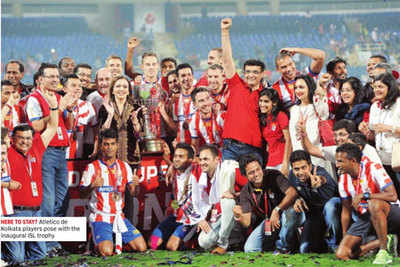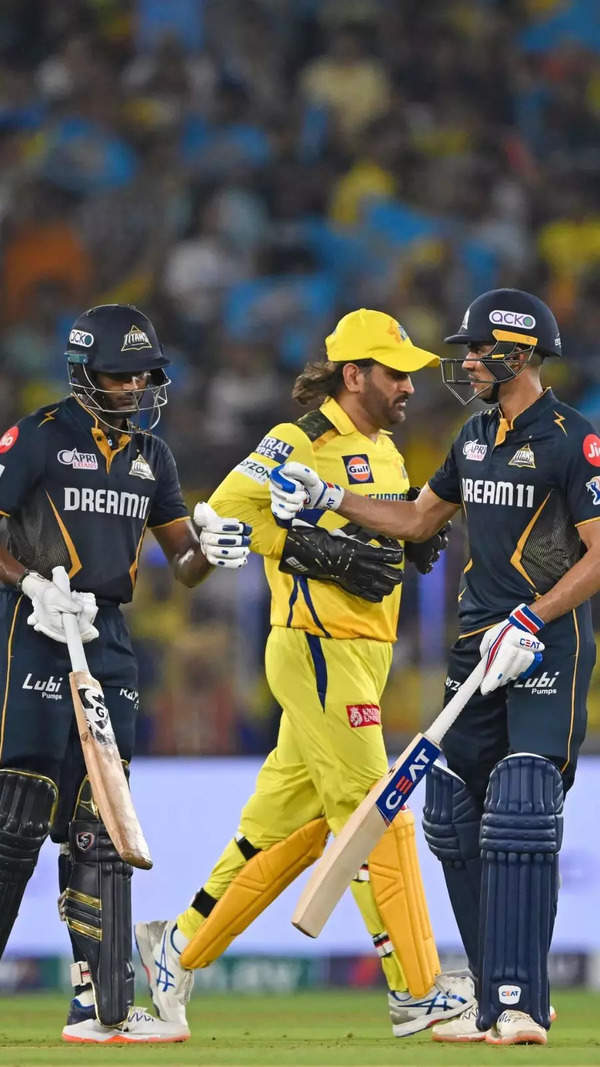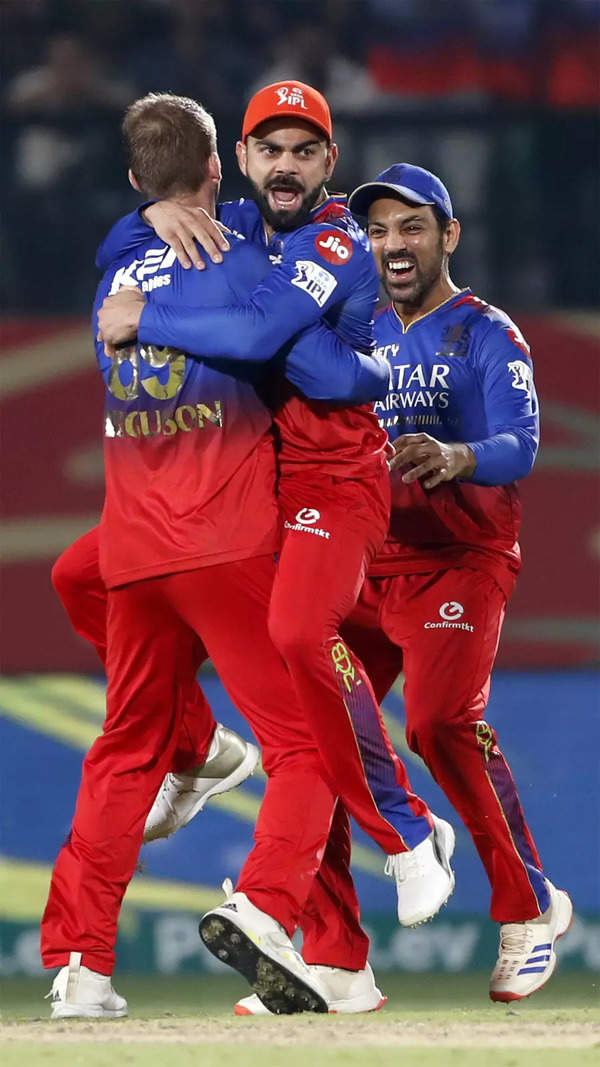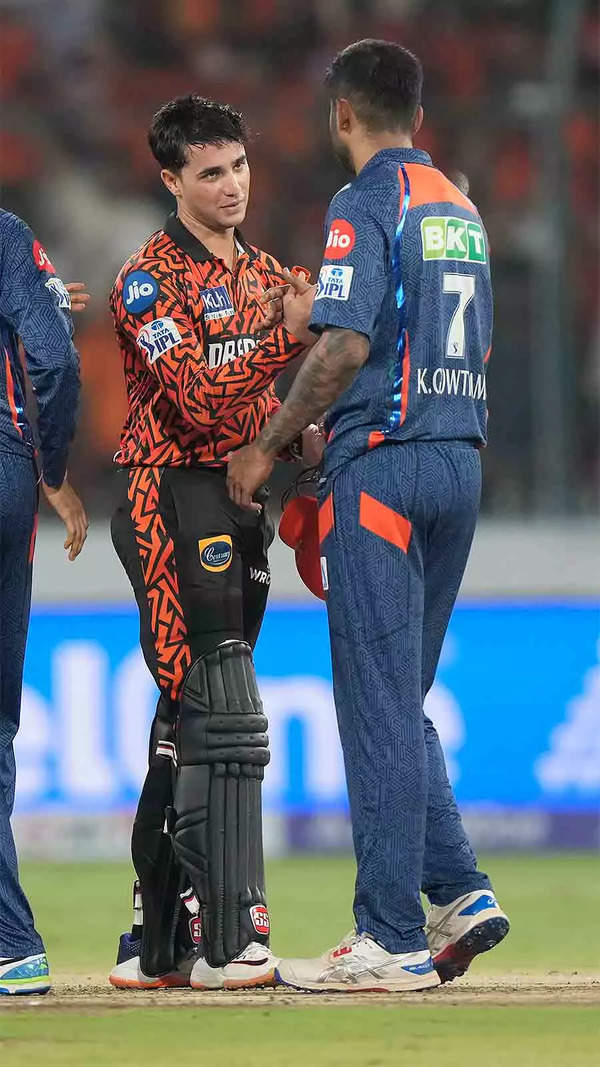- News
- Sports News
- Football News
- Indian Super League News
- An evolving ISL is the way forward
Trending
This story is from September 27, 2015
An evolving ISL is the way forward
The birth of ISL brought about a revolutionary change in the way the professional league was conceived and conducted.

The birth of ISL brought about a revolutionary change in the way the professional league was conceived and conducted.
Key Highlights
• The birth of ISL brought about a revolutionary change in the way the professional league was conceived and conducted
• ISL was an out an out success in the first season, just like the way the J-League took shape in some way
• ISL was an out an out success in the first season, just like the way the J-League took shape in some way
Indian football is facing a strange problem of plenty with two ‘leagues' in its kitty. But joining hands for one solid league can only be fruitful when the number of the foreign players is brought down as per AFC rules
Is the Indian Super League, a way forward for Indian football or is it the I-League?
The burning question irked hardliners of Indian football no end. But the birth of the Indian Super League (ISL) brought about a revolutionary change in the way the professional league was conceived and conducted.Until then, except for the Kolkata derby which witnessed a full house, empty stands greeted most I-League matches with a trickling of fan following at some of the venues across the country.
Poor television coverage coupled with poor branding, marketing, absence of marquee players, mediocre performances and a dull ambience meant the entire package turned out to be unattractive.
The maiden year showed promise and tasted success, thanks to an amalgamation of footballing legends, Bollywood stars, cricket superstars and corporate giants joining hands. The sprucing up of venues and better match experience was enough to work that magic to lure fans in droves to venues, a sight never experienced in decades of Indian football. It was party and selfie time.
Social networks went into overdrive making ISL match venues a happening place as the fan club took shape and started spreading like the plague, each group trying to outdo the other through banners, pictures and tweets on social networking sites. A never-before occurrence. TV ratings improved like never before and though a few legends flopped and the expenditure exceeded financial gains by a mile, the ISL was an out an out success.
Just like the way the J-League took shape in some way.
For instance, though they disbanded the old league, unlike in India where we now have two leagues in operation, the J-League is the most successful league in Asia and has helped Japan leapfrog and be among the leading nations from Asia in world football.
South Korea too has a similar league structure the K League Classic, founded in 1983, while the K League Challenge for 2nd division teams was founded in 2013. Even though there has been turmoil and clubs had to move out to smaller cities as the big cities were also franchisees of baseball teams, the league has stabilized and is flourishing with many Korean players now plying their trade in Europe.
The J-League was kicked off on a community-based model under the leader ship of one of Japan's leading players and later national coach, Saburo Kawabuchi. He and his team under took an extensive study tour of Europe, especially Germany, learned the value of scouting and appropriate wage structure, moved on to the United States and visited the Super Bowl to derive a new thinking on merchandise and marketing.
It was mandated that a club must own a 15,000 seater stadium with floodlights and the name of the city incorporated in the club. A youth structure was put in place to create a pathway for kids to eventually play for their professional hometown team. A professional designer company and a leading creative company were roped in to design the jerseys and team logos respectively.
The marketing exercise was a resounding success, from cute toy mascots to key-rings and club scarves, fetching more than $ 30 million from 200 merchandise outlets across the country in 1992.Twenty billion yen was spent promoting the league ahead of its launch and when 50,000 tickets went on sale for the opening match between Verdy and Yokohama more than 306,000 people applied. Kawabuchi and his team succeeded in creating a buzz and a fashion statement The signing of global stars including Brazilian legend, Zico (Kashima), Gary Lineker, the 1996 WC golden boot winner (for Nagoya), Dunga, Edu, Ramon Diaz and Dragan Stojkovic only helped add to the excitement.

The J-League turned out to be the biggest craze in Japan for the first three years in the entertainment industry. Majority of the matches were sold out, the sport was grabbed by prime-time TV, while in-stadia atmosphere emulated some of the biggest leagues in Europe.
China too followed suit. The advent of former England boss Sven Goran Eriksson and Fabio Cannavaro have put the Chinese Super League amongst the world's biggest spenders. The CSL clubs spent 122.2 million euros (HK$1.06 billion) in the recently closed winter transfer window, almost double of last year's figure, said to be second only to the English Premier League (186.8m euros) and ahead of Italy's Serie A, according to statistics from a German website transfer market.
Tim Cahill, once of Premier League club Everton, is the star name among the 47 imports -including several Brazilians. Cannavaro smashed the Chinese transfer record in January with a $17 million swoop for Brazilian Ricardo Goulart.
While there is fear that China could follow in England's path, pundits in China are convinced that theirs will not be the case given that only four foreigners, including an Asian are allowed in the starting line-up as mandated by the AFC, football's governing body in Asia.
It is said that the Chinese President Xi Jinping, an avid football fan, has even gone on to back a football reform plan recently even as China seeks rapid development amid rumours that it could bid to host the 2026 Fifa World Cup.
Australia too is not far behind with a revamped A-League with new teams joining. The competition also obtained the largest coup ever when Melbourne City FC signed up former Barcelona star David Villa on loan for 10 games. They also roped in Dutchman Gus Hiddink to take over the national team.
India can only emulate the success stories of Japan, Australia and China by scripting their own football history, not by merging the ISL with the I-League but by charting a middle path that can convince the hardliners and lure them to joining hands for one solid league where the numbers of the foreign players -world class -is gradually brought down to AFC rules, while adopting, if not improvising, the J-League branding and marketing strategy , to take Indian football forward.
Is the Indian Super League, a way forward for Indian football or is it the I-League?
The burning question irked hardliners of Indian football no end. But the birth of the Indian Super League (ISL) brought about a revolutionary change in the way the professional league was conceived and conducted.Until then, except for the Kolkata derby which witnessed a full house, empty stands greeted most I-League matches with a trickling of fan following at some of the venues across the country.
Poor television coverage coupled with poor branding, marketing, absence of marquee players, mediocre performances and a dull ambience meant the entire package turned out to be unattractive.
That changed with the emergence of the ISL last year. And though the threat of I-League clubs shutting down looms large, going by research and success stories among Asian nations, it is a league like the ISL with community-based franchisees and run along the Asian Football Confederation (AFC) guidelines that can turn around Indian football.
The maiden year showed promise and tasted success, thanks to an amalgamation of footballing legends, Bollywood stars, cricket superstars and corporate giants joining hands. The sprucing up of venues and better match experience was enough to work that magic to lure fans in droves to venues, a sight never experienced in decades of Indian football. It was party and selfie time.
Social networks went into overdrive making ISL match venues a happening place as the fan club took shape and started spreading like the plague, each group trying to outdo the other through banners, pictures and tweets on social networking sites. A never-before occurrence. TV ratings improved like never before and though a few legends flopped and the expenditure exceeded financial gains by a mile, the ISL was an out an out success.
Just like the way the J-League took shape in some way.
For instance, though they disbanded the old league, unlike in India where we now have two leagues in operation, the J-League is the most successful league in Asia and has helped Japan leapfrog and be among the leading nations from Asia in world football.
South Korea too has a similar league structure the K League Classic, founded in 1983, while the K League Challenge for 2nd division teams was founded in 2013. Even though there has been turmoil and clubs had to move out to smaller cities as the big cities were also franchisees of baseball teams, the league has stabilized and is flourishing with many Korean players now plying their trade in Europe.
The J-League was kicked off on a community-based model under the leader ship of one of Japan's leading players and later national coach, Saburo Kawabuchi. He and his team under took an extensive study tour of Europe, especially Germany, learned the value of scouting and appropriate wage structure, moved on to the United States and visited the Super Bowl to derive a new thinking on merchandise and marketing.
It was mandated that a club must own a 15,000 seater stadium with floodlights and the name of the city incorporated in the club. A youth structure was put in place to create a pathway for kids to eventually play for their professional hometown team. A professional designer company and a leading creative company were roped in to design the jerseys and team logos respectively.
The marketing exercise was a resounding success, from cute toy mascots to key-rings and club scarves, fetching more than $ 30 million from 200 merchandise outlets across the country in 1992.Twenty billion yen was spent promoting the league ahead of its launch and when 50,000 tickets went on sale for the opening match between Verdy and Yokohama more than 306,000 people applied. Kawabuchi and his team succeeded in creating a buzz and a fashion statement The signing of global stars including Brazilian legend, Zico (Kashima), Gary Lineker, the 1996 WC golden boot winner (for Nagoya), Dunga, Edu, Ramon Diaz and Dragan Stojkovic only helped add to the excitement.

The J-League turned out to be the biggest craze in Japan for the first three years in the entertainment industry. Majority of the matches were sold out, the sport was grabbed by prime-time TV, while in-stadia atmosphere emulated some of the biggest leagues in Europe.
China too followed suit. The advent of former England boss Sven Goran Eriksson and Fabio Cannavaro have put the Chinese Super League amongst the world's biggest spenders. The CSL clubs spent 122.2 million euros (HK$1.06 billion) in the recently closed winter transfer window, almost double of last year's figure, said to be second only to the English Premier League (186.8m euros) and ahead of Italy's Serie A, according to statistics from a German website transfer market.
Tim Cahill, once of Premier League club Everton, is the star name among the 47 imports -including several Brazilians. Cannavaro smashed the Chinese transfer record in January with a $17 million swoop for Brazilian Ricardo Goulart.
While there is fear that China could follow in England's path, pundits in China are convinced that theirs will not be the case given that only four foreigners, including an Asian are allowed in the starting line-up as mandated by the AFC, football's governing body in Asia.
It is said that the Chinese President Xi Jinping, an avid football fan, has even gone on to back a football reform plan recently even as China seeks rapid development amid rumours that it could bid to host the 2026 Fifa World Cup.
Australia too is not far behind with a revamped A-League with new teams joining. The competition also obtained the largest coup ever when Melbourne City FC signed up former Barcelona star David Villa on loan for 10 games. They also roped in Dutchman Gus Hiddink to take over the national team.
India can only emulate the success stories of Japan, Australia and China by scripting their own football history, not by merging the ISL with the I-League but by charting a middle path that can convince the hardliners and lure them to joining hands for one solid league where the numbers of the foreign players -world class -is gradually brought down to AFC rules, while adopting, if not improvising, the J-League branding and marketing strategy , to take Indian football forward.
End of Article
FOLLOW US ON SOCIAL MEDIA










